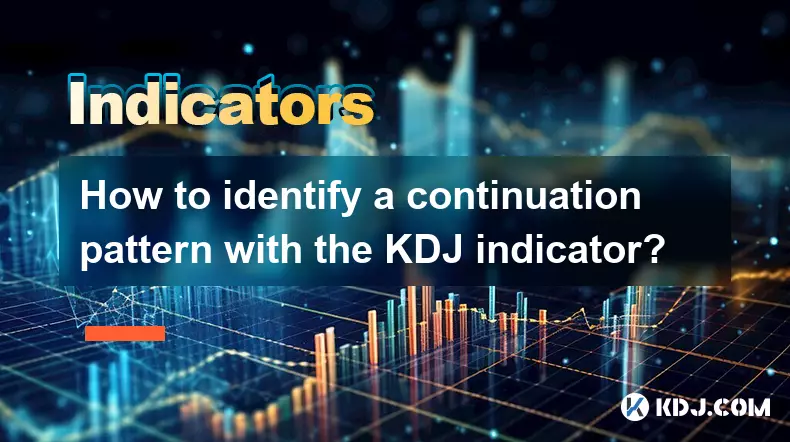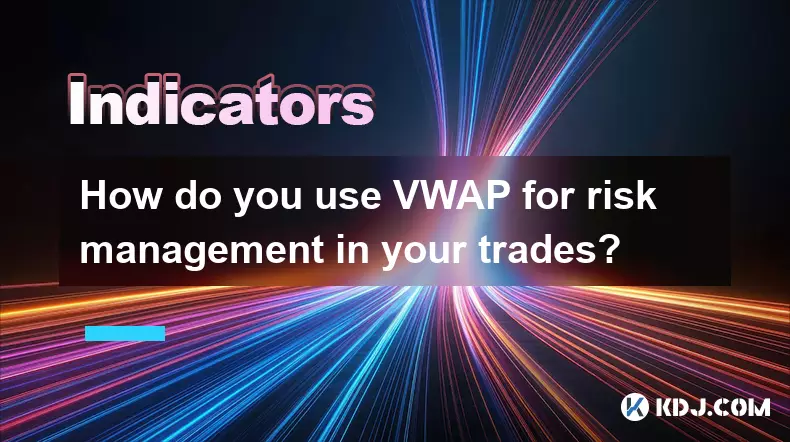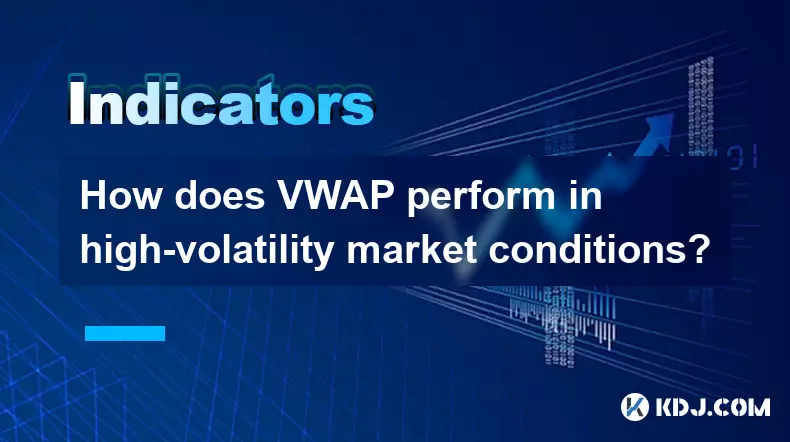-
 bitcoin
bitcoin $110047.851143 USD
-1.37% -
 ethereum
ethereum $3727.617466 USD
-1.30% -
 tether
tether $1.000961 USD
-0.05% -
 bnb
bnb $1114.045467 USD
1.72% -
 xrp
xrp $2.343280 USD
0.14% -
 solana
solana $174.674876 USD
-5.85% -
 usd-coin
usd-coin $0.999999 USD
0.02% -
 tron
tron $0.311757 USD
-2.44% -
 dogecoin
dogecoin $0.183678 USD
-3.76% -
 cardano
cardano $0.627109 USD
-2.07% -
 ethena-usde
ethena-usde $1.000300 USD
0.15% -
 hyperliquid
hyperliquid $36.865760 USD
-2.74% -
 chainlink
chainlink $16.968918 USD
-1.48% -
 stellar
stellar $0.318159 USD
0.47% -
 bitcoin-cash
bitcoin-cash $500.637224 USD
-1.56%
How to identify a continuation pattern with the KDJ indicator?
The KDJ indicator helps crypto traders spot momentum shifts and continuation patterns by analyzing %K, %D, and %J lines in relation to price action and volume.
Oct 11, 2025 at 09:18 pm

Understanding the KDJ Indicator in Cryptocurrency Trading
1. The KDJ indicator, also known as the Stochastic Oscillator, is widely used in cryptocurrency trading to identify potential price reversals and momentum shifts. It consists of three lines: %K, %D, and %J. The %K line reflects the current closing price relative to the price range over a specific period, usually 9 days. The %D line is a moving average of %K, providing signal confirmation. The %J line represents the divergence between %K and %D, often signaling overbought or oversold conditions.
2. In volatile markets like cryptocurrencies, the KDJ helps traders spot short-term trends by measuring momentum. When the %K line crosses above the %D line in the oversold zone (below 20), it may suggest upward momentum is building. Conversely, when %K crosses below %D in the overbought zone (above 80), it could indicate weakening bullish strength.
3. Traders rely on these signals to time entries and exits, especially during consolidation phases where price moves sideways before resuming a prior trend. Recognizing continuation patterns through KDJ requires observing how the oscillator behaves during pauses in trending markets.
Spotting Continuation Patterns Using KDJ Crossovers
1. A continuation pattern occurs when an asset briefly consolidates before resuming its prevailing trend. In an uptrend, if price enters a narrow range and the KDJ dips into the oversold region without triggering a reversal, it can signal accumulation before the next leg up. Watch for the %K line to cross above %D while still below 30, followed by a breakout in price.
2. During downtrends, a similar setup happens when KDJ rises into the overbought area (above 70) during a corrective bounce, then sees %K cross back under %D, confirming bearish momentum is returning. This indicates sellers are regaining control after a temporary pause.
3. The key lies in aligning KDJ behavior with price structure. If the price forms higher lows in an uptrend and KDJ makes higher lows too, it reinforces the likelihood of continuation. Divergence between price and KDJ, however, may warn of exhaustion rather than continuation.
4. Volume should be monitored alongside KDJ signals. A surge in volume upon the %K/%D crossover increases confidence that institutional or whale activity is behind the move, supporting the idea of trend resumption.
Confirming Continuation with KDJ and Price Action
1. Candlestick patterns such as bullish engulfing or hammer formations near support levels, combined with a KDJ crossover from oversold territory, strengthen the case for bullish continuation. In crypto markets, where sentiment shifts rapidly, such confluence adds reliability to trade setups.
2. Resistance zones that previously halted rallies become critical when price retests them. If KDJ remains neutral (between 30–70) during the retest and avoids entering overbought territory, it suggests healthy consolidation rather than exhaustion. A subsequent breakout with %K crossing above %D confirms renewed buying pressure.
3. Traders should avoid acting solely on KDJ readings without considering broader market context, including Bitcoin’s movement, macroeconomic news, and exchange inflows/outflows. Altcoins often follow BTC’s lead, so a bullish KDJ signal in an altcoin during a BTC downtrend may fail.
4. Timeframe alignment improves accuracy. For example, a daily chart showing KDJ in oversold condition with a bullish crossover supported by a similar signal on the 4-hour chart increases the probability of an upward continuation.
Common Mistakes When Using KDJ for Continuation Signals
1. Overtrading based on minor crossovers without waiting for confirmation candles leads to false entries. In choppy crypto markets, KDJ can generate multiple whipsaws within a tight range.
2. Ignoring extreme readings during strong trends can be misleading. In parabolic bull runs, KDJ may stay overbought for extended periods. Assuming a reversal just because %J exceeds 100 can cause missed gains.
3. Failing to adjust KDJ settings according to volatility may reduce effectiveness. While default settings work for some, highly volatile coins might require smoothing parameters or longer periods to filter noise.
4. Relying only on KDJ without combining it with support/resistance, moving averages, or volume analysis limits perspective. Multi-indicator confirmation reduces risk in unpredictable digital asset markets.
Frequently Asked Questions
What does a KDJ crossover below 20 indicate in a downtrend?It typically suggests a temporary pullback or relief rally, not necessarily a reversal. If price fails to break key resistance afterward and KDJ turns downward again, the downtrend is likely continuing.
Can KDJ predict exact reversal points in cryptocurrency markets?No indicator can predict exact turning points consistently. KDJ provides probabilistic signals based on momentum. Its value increases when used alongside structural analysis rather than in isolation.
How do you adjust KDJ settings for different cryptocurrencies?More volatile assets like meme coins may benefit from longer lookback periods (e.g., 14 instead of 9) and smoothed %D lines. Backtesting various configurations on historical data helps determine optimal inputs.
Is KDJ more effective on higher timeframes in crypto trading?Yes, higher timeframes like daily or weekly reduce noise and produce more reliable crossovers. Short-term charts often reflect emotional swings, making KDJ signals less trustworthy without additional filters.
Disclaimer:info@kdj.com
The information provided is not trading advice. kdj.com does not assume any responsibility for any investments made based on the information provided in this article. Cryptocurrencies are highly volatile and it is highly recommended that you invest with caution after thorough research!
If you believe that the content used on this website infringes your copyright, please contact us immediately (info@kdj.com) and we will delete it promptly.
- XRP Price Prediction: Weekend Rollercoaster or Rally?
- 2025-10-12 08:45:16
- Bittensor (TAO): Super Bullish Signals Point to Potential 2x Rally
- 2025-10-11 10:25:12
- Silver Price Correction: Navigating the Dip & Identifying Key SEO Keywords
- 2025-10-11 10:25:12
- Decoding Crypto Trends: Bittensor's Bull Run, Cardano's Dip, and LivLive's Presale Buzz in 'Uptober 2025'
- 2025-10-12 08:45:16
- MoonBull: The Crypto Meme Coin Promising 1000x Gains?
- 2025-10-11 10:30:01
- Crypto Payroll Revolution: Stablecoins, Altcoins, and the Future of Salary Payments
- 2025-10-11 10:30:01
Related knowledge

What's the main difference between VWAP and TWAP?
Oct 12,2025 at 11:54am
Understanding VWAP and Its Role in Crypto Trading1. Volume Weighted Average Price (VWAP) is a trading benchmark that calculates the average price of a...

How do you identify exhaustion moves using VWAP and its bands?
Oct 12,2025 at 08:00am
Understanding the Role of Decentralized Exchanges in Crypto Trading1. Decentralized exchanges (DEXs) operate without a central authority, allowing use...

What are the main advantages of using VWAP over EMA?
Oct 11,2025 at 02:18am
Main Advantages of Using VWAP Over EMA1. Volume-Weighted Average Price (VWAP) incorporates trading volume into its calculation, offering a more accura...

How do you use VWAP on different chart types like Heikin Ashi?
Oct 11,2025 at 05:01pm
Understanding VWAP in the Context of Heikin Ashi Charts1. The Volume Weighted Average Price (VWAP) is a powerful analytical tool commonly used by trad...

How do you use VWAP for risk management in your trades?
Oct 11,2025 at 02:54am
Understanding VWAP as a Dynamic Benchmark1. The Volume Weighted Average Price (VWAP) serves as a crucial reference point in intraday trading by reflec...

How does VWAP perform in high-volatility market conditions?
Oct 10,2025 at 08:00pm
Understanding VWAP in Turbulent Market Phases1. Volume-Weighted Average Price (VWAP) serves as a benchmark for institutional traders aiming to assess ...

What's the main difference between VWAP and TWAP?
Oct 12,2025 at 11:54am
Understanding VWAP and Its Role in Crypto Trading1. Volume Weighted Average Price (VWAP) is a trading benchmark that calculates the average price of a...

How do you identify exhaustion moves using VWAP and its bands?
Oct 12,2025 at 08:00am
Understanding the Role of Decentralized Exchanges in Crypto Trading1. Decentralized exchanges (DEXs) operate without a central authority, allowing use...

What are the main advantages of using VWAP over EMA?
Oct 11,2025 at 02:18am
Main Advantages of Using VWAP Over EMA1. Volume-Weighted Average Price (VWAP) incorporates trading volume into its calculation, offering a more accura...

How do you use VWAP on different chart types like Heikin Ashi?
Oct 11,2025 at 05:01pm
Understanding VWAP in the Context of Heikin Ashi Charts1. The Volume Weighted Average Price (VWAP) is a powerful analytical tool commonly used by trad...

How do you use VWAP for risk management in your trades?
Oct 11,2025 at 02:54am
Understanding VWAP as a Dynamic Benchmark1. The Volume Weighted Average Price (VWAP) serves as a crucial reference point in intraday trading by reflec...

How does VWAP perform in high-volatility market conditions?
Oct 10,2025 at 08:00pm
Understanding VWAP in Turbulent Market Phases1. Volume-Weighted Average Price (VWAP) serves as a benchmark for institutional traders aiming to assess ...
See all articles









































































